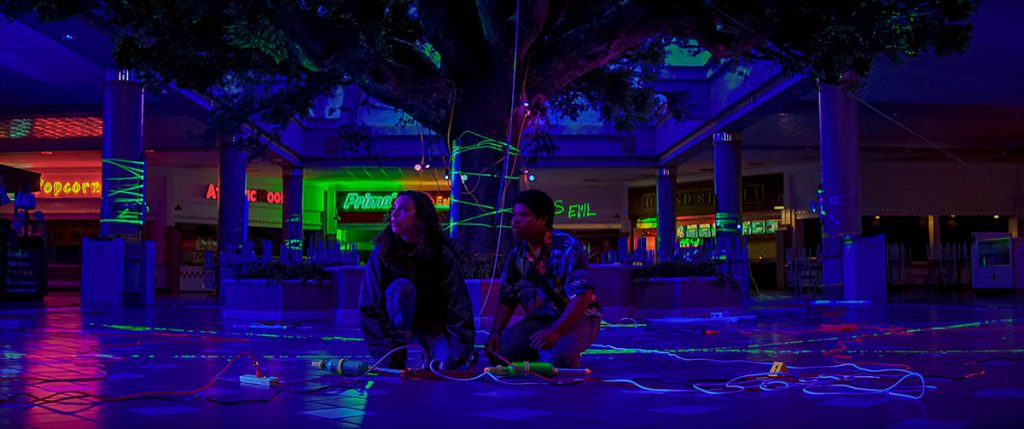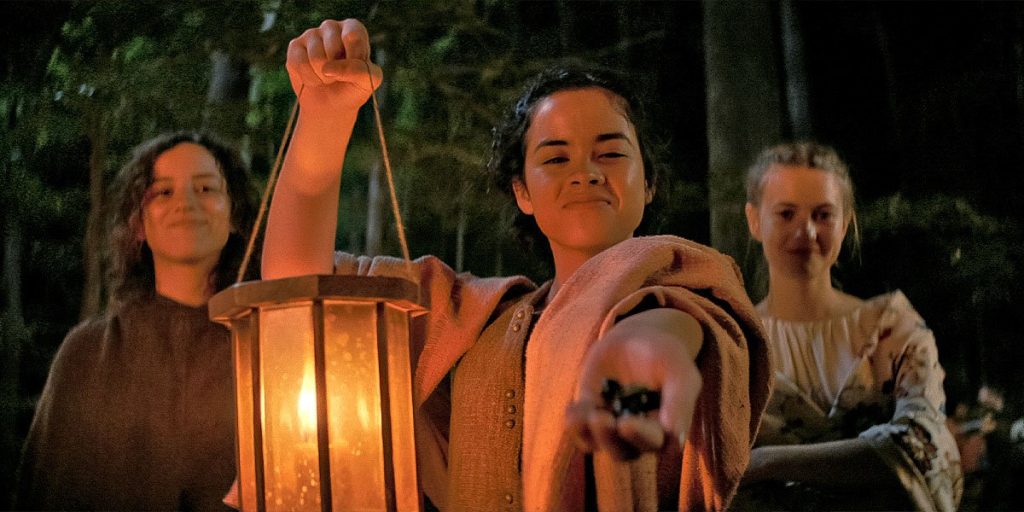Fear Street Part 3: 1666 stays consistent with its predecessors, maintaining many of the trilogy’s strengths, while also keeping some of the same weaknesses.
To make the most of Fear Street Part 3: 1666, it’s probably best to think of it as two different films, one playing directly after the other. Each has its own distinct and contained story while also addressing the same overarching narrative. The framing device is tied to the 1994 plotline established in Part 1, but uses a method of flashback consistent with how it was done in Part 2. The connection between the two is easy enough to follow, particularly if you’ve seen the other installments. But if you were to judge this film independently on its own merits, this shift is still jarring and odd, and the story-telling convention wouldn’t work in most contexts. If you haven’t watched any of these movies or read my other reviews yet, first of all, the review for the third and final film is a very weird place to begin. Secondly, I would say that it helps to think of the Fear Street anthology not as a trilogy of movies, but perhaps as a television mini series with three very long installments: I think that mindset should help with any clashing time jumps you may experience.
Anywho, Part 3 begins right where Part 2. ends, with Deena (Kiana Madeira) living a vision from Sarah Fier’s (Elizabeth Scopel) life, Sarah Fier being the witch on whom Shadyside’s centuries-old murder curse has been blamed. This vision makes up the first half of the film’s runtime, while the second half returns to 1994 when Deena, Josh (Benjamin Flores Jr), Ziggy Berman (Gillian Jacobs), and Martin (Darrell Britt-Gibson), a janitor from Part 1, must try to stop the evil plaguing their town once and for all.
First of all, period horror films are a great idea, and there need to be more of them: older time periods not only innately provide the obstacles of limited technologies and medicines, but “of the time” mindsets and rhetoric can themselves be horrifying to the modern audience. Not to mention the opportunities for neat set pieces and costumes, and the potential for creative ways of exploring familiar themes. Part 3 gets to do some of this, but doesn’t get to explore these possibilities as much as I would have liked, given how only the first half of the film is devoted to the 1666 time period. Still, you do get a lot of cool set pieces that are used in creating several haunting tableaus. Although the accents the actors use in the 1666 scenes are… Interesting. Let’s just say everyone made a strong choice and absolutely committed to it.

A lot of familiar elements from the other two films made it into this one, among them is the inconsistent lighting. On one hand, there were still a couple of daytime scenes that were lit too darkly; I’m scratching my head how Janiak pulled that off. But on the other hand, the night scenes were oddly lit really well. For example, there’s a love scene shot to look like it’s lit entirely by natural lighting that shines from the moon, illuminating the characters with the moonlight able to find them through the forest canopy. This scene has some lovely silhouettes, and makes really effective use of shadow coming off of a single light source.
The blood and prosthetics I praised from the first two movies are still here, and they give us some deeply disturbing images. The CGI I criticized in the first two films, however, is also still here, and it still doesn’t look very good, especially in comparison to the aforementioned practical effects. And the dialogue, while continuing to be not terrible, still isn’t great, and this dialogue really isn’t helped when delivered in the actors’… interesting accents.
There was also something that Part 3 finally explored, something for which I had been waiting since Part 1: the theme of classism, and the condemnation of the “other.” This is a theme at which the first two parts hint, but never really delve into. But Part 3 finally addresses it, showing you how generational wealth and power held for centuries by very few is done at the expense of others; how the oppression of others is necessary to maintain this long chain of power, thus creating a permanent underclass that the powerful can scapegoat and condemn. This underclass, of course, having many marginalized groups including folks who aren’t wealthy, people of color, and queer folks. It’s hard to discuss what I mean here without spoiling the entire series for you, and I’m probably filling in gaps the way I want them filled, but it was really great to see some follow-through on this front. I feel like if I were to rewatch the films with this mindset, knowing all that I know now, it might be a different watching experience.
Fear Street Part 3: 1666 gives the anthology a satisfying ending, with a tone and quality consistent with the first two films. The trilogy as a whole presents a cohesive vision of horror, delivered in a way that is entertaining and accessible for its target demographic. I stand by my assertions from my first two reviews: the Fear Street anthology is solid popcorn horror for teenagers. It’s not exactly groundbreaking, but it succeeds in what it tries to do.
Fear Street Part 3: 1666 is now available to watch on Netflix. Read our reviews of horror anthology movies Lore, The Killers, Scare Us, and Fear Street Part 1 and Part 2!

